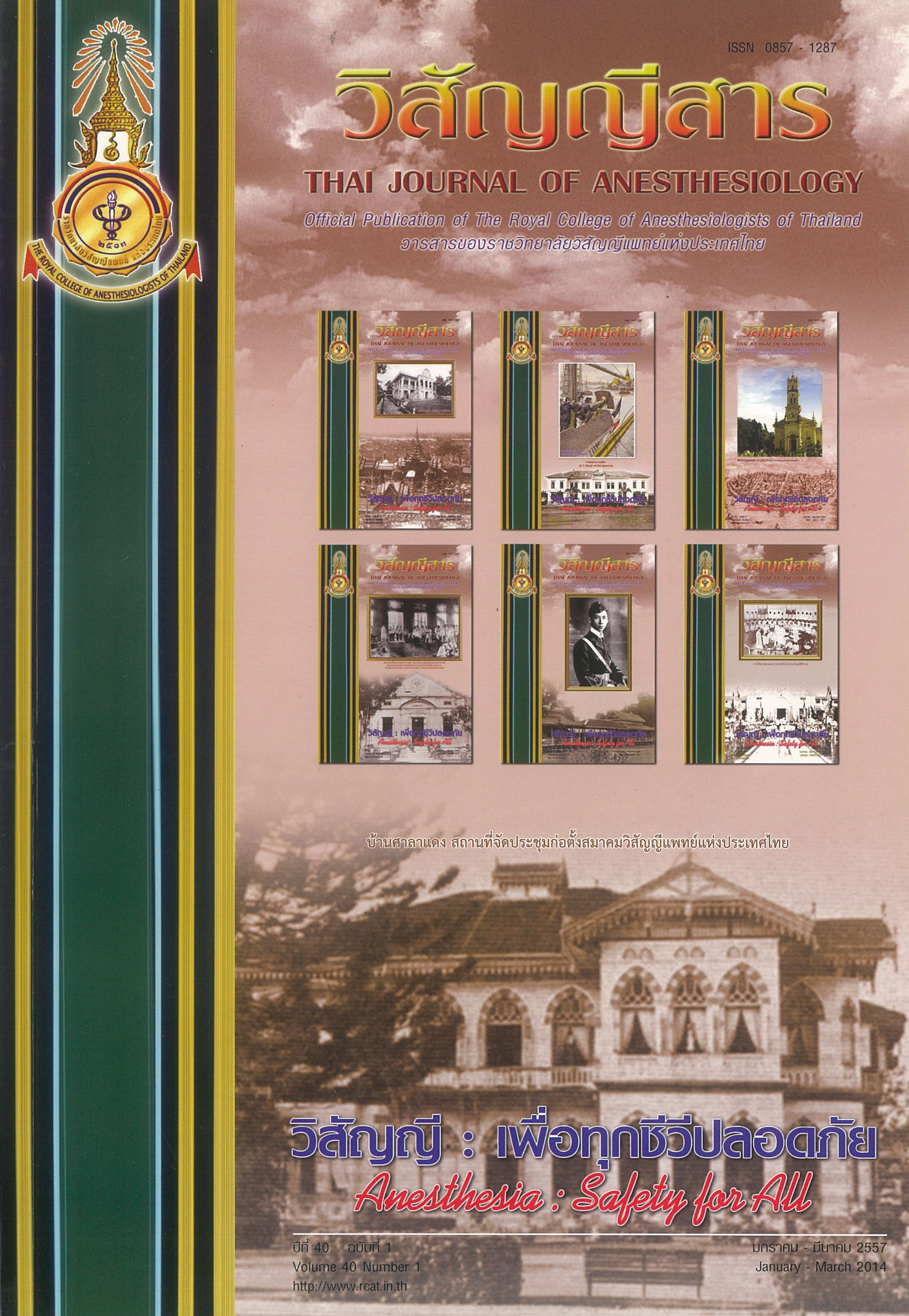Three - level Injection Paravertebral Block (PVB) using Paravertebral Catheter (C - PVC) Compared to General Anaesthesia (GA) in Mastectomy Surgery.
Main Article Content
Abstract
Background: Many investigators favor paravertebral block for breast surgery due to better postoperative analgesia and shorter hospital stay. Though there is limited published evidence, a single injection for PVB may be insufficient for extensive breast surgery. However, considering the potential risks of PVB a limitation of injections would be preferable. The purpose of our study is to find out if single - injection PVB via paravertebral catheter (C - PVC) at three different levels is advantageous and efficient compared to general anaesthesia (GA) in patients having mastectomy with axillary dissection. Methods: The Ethics committee approved this prospective, randomized, single - blinded study. Sixty ASA I–III women undergoing unilateral mastectomy surgery with axillary dissection were enrolled. Group I patients received GA; propofol, fentanyl, atracurium, sevoflurane and 50% oxygen in air. Group II patients received PVB, under ultrasound guidance at level Th 4. After the catheter positioned in the paravertebral space 8 cm, a mixture of 10 ml bupivacaine 0.5% plus 20 ml lidocaine 2% with adrenaline 1:200,000 was slowly injected sequentially 10 ml each injections at three different levels. The efficiency of PVB, postoperative pain and other side effects were recorded. Results: The patient characteristics and intraoperative hemodynamic parameters were similar in both groups. The length of hospital stay (LOS) was statistically significant greater in Group I than Group II. At PACU, the analgesic consumption and the VRS both at rest and at movement were significantly greater in Group I than Group II. At ward, the cumulative rescue analgesic consumption was lesser in Group II than Group I but not statistically significant. The VRS both at rest and at movement were significantly greater in Group I at 1 - 6hr and 6 - 12hr but not at 12 - 24hr. Incidences and severity of PONV in Group I was greater than Group II but not statistically significant between the 2 groups at any time point. There were no complications associated with PVB. Patient satisfaction was comparable in both groups. Conclusion: Surgical anaesthesia by three - level injection PVB using C - PVC for mastectomy with axillary dissection is a clinically feasible, efficient and safety technique by using ultrasound guidance together with LOR technique. This technique offers superior analgesia and decreases LOS when compared with GA. Furthermore, the potential risks of multiple - site injection PVB could be minimized with a high probability of patient acceptance.
Article Details
Section
Original articles


